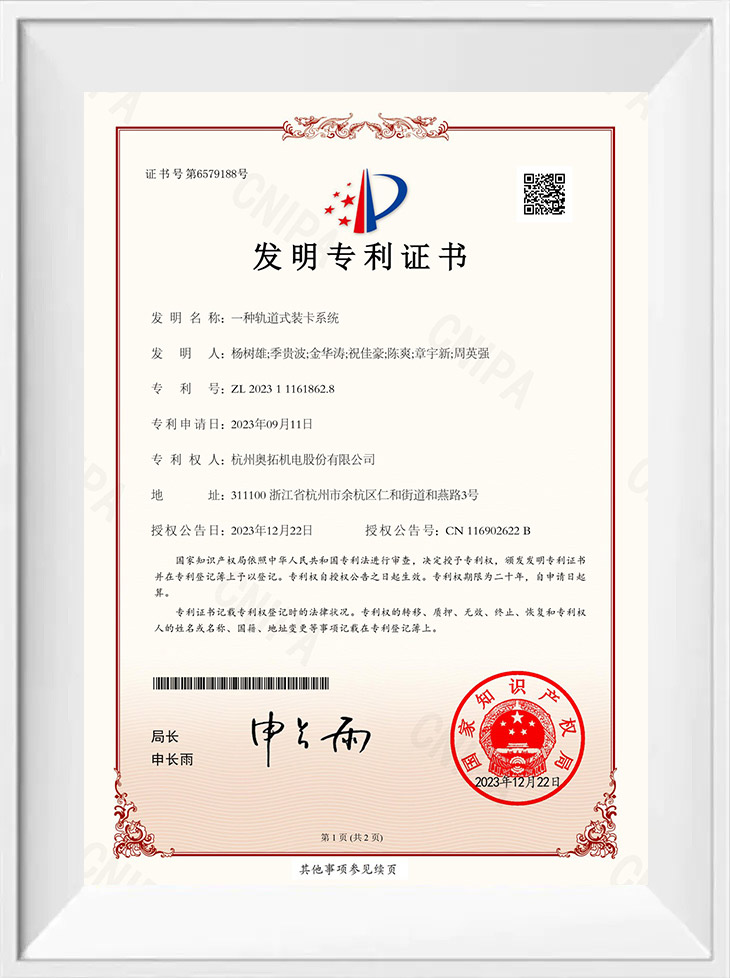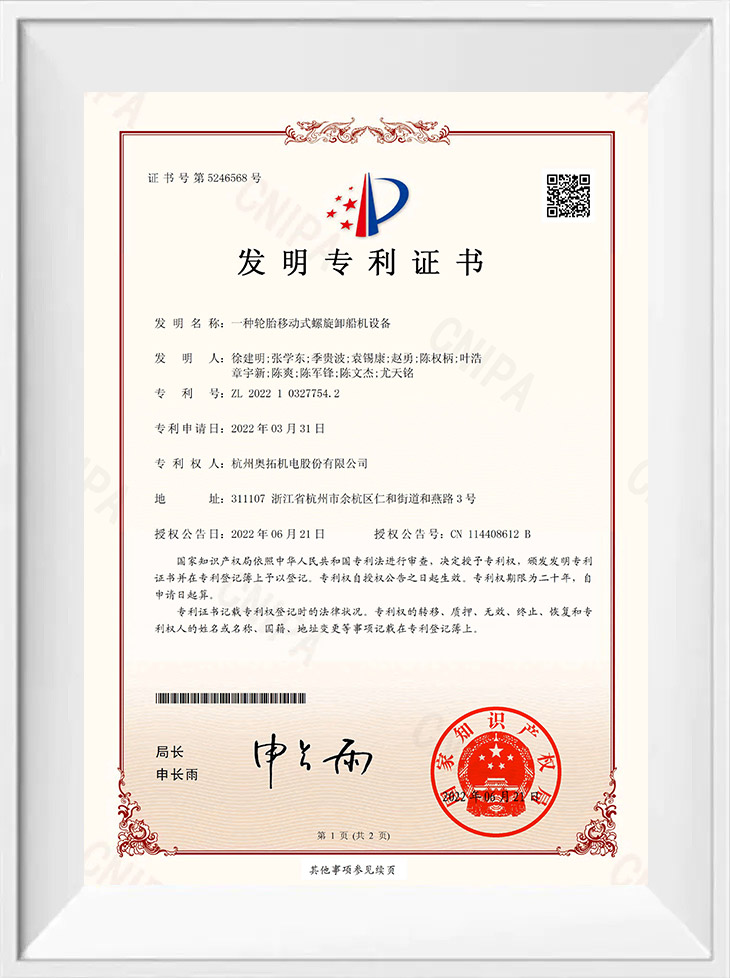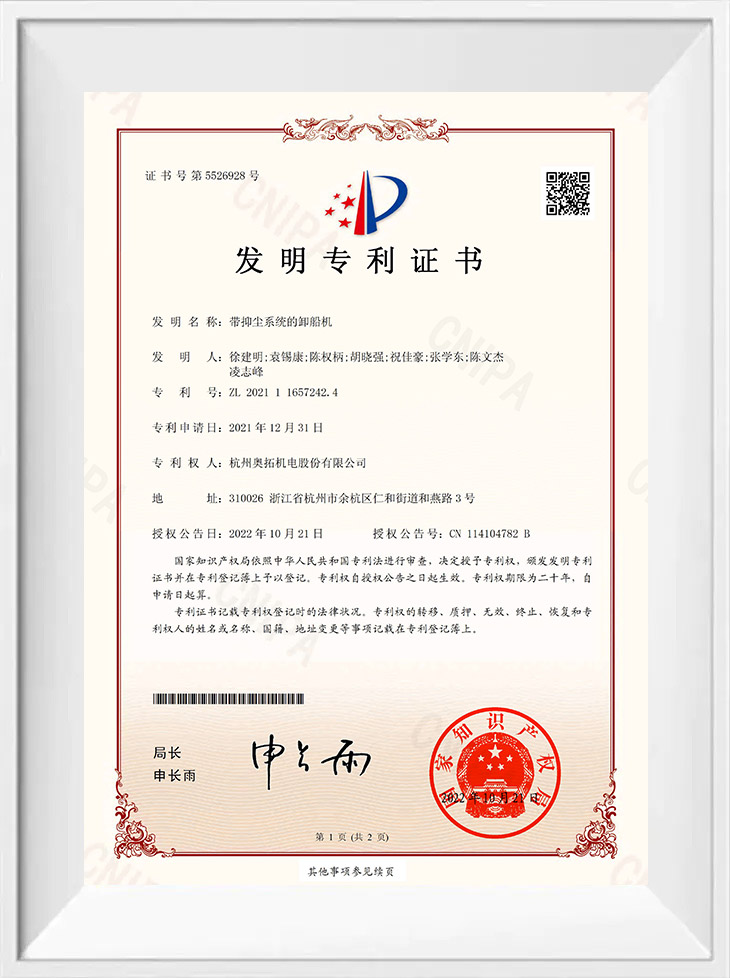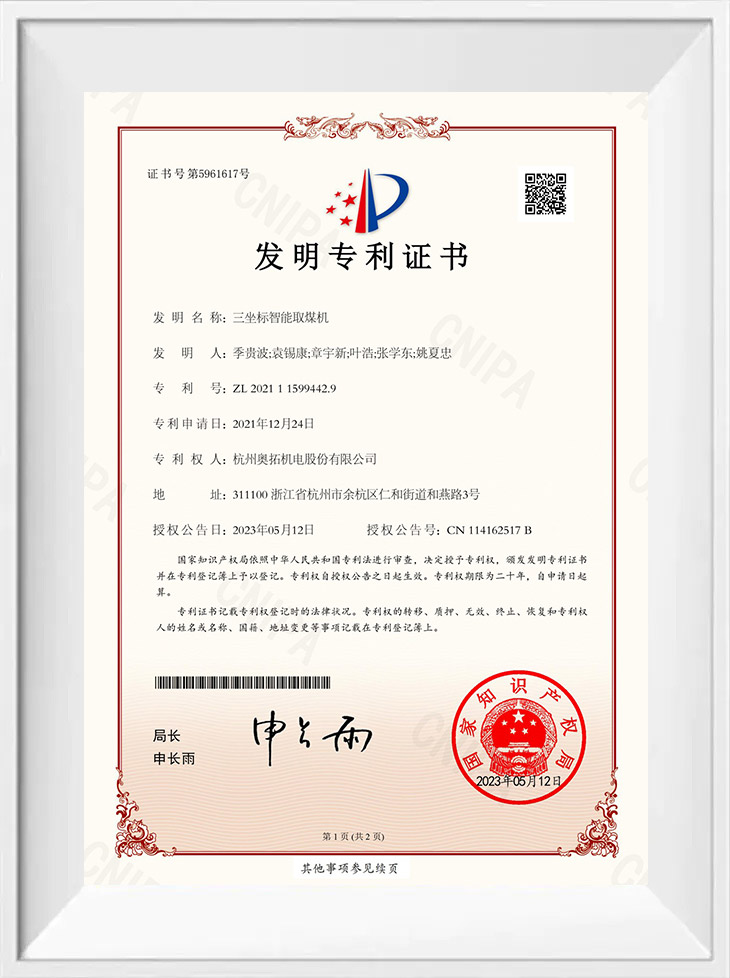-

Professionalism
-

Quality
-

One stop solution



News Center
News Updates
-
Admin 2025-12-25
Optimizing Maintenance and Lifecycle Management of Ship Loader and Unloader Systems
The ship loader and unloader is a critical asset in bulk material handling, including coal, ore, cem...Read More -
Admin 2025-12-19
Ensuring Efficient and Stable Operation of Ship Loader and Unloader Systems for Bulk Materials
Key Factors for Efficient Operation 1. Equipment Design and Structural Considerations Modern high-ca...Read More -
Admin 2025-12-12
Strategic Selection: Matching Ship Loader and Unloader Capacity to Port Operational Requirements
I. The Crucial Role of Bulk Material Handling Efficiency In the highly competitive dry bulk shipping...Read More -
Admin 2025-12-08
Aotuo Presents at Hangzhou Sand and Aggregates Supply Chain Innovation Exchange to Drive Industry Upgrading
Recently, the 2025 DongHai Forum—the Fifth China Sand and Aggregates High-Quality Development Summit...Read More -
Admin 2025-12-04
Maximizing Throughput: Precision Capacity Calculation for the Mobile ship unloader
Efficient port logistics depend on the reliable and rapid unloading of bulk cargoes. For the **Mobil...Read More -
Admin 2025-11-27
Operational Flexibility: Assessing Hatch Access and Clean-up Efficiency of Mobile ship unloader
For port operators and bulk material logistics companies, the true measure of a **Mobile ship unload...Read More
600-15000 DWT 100-500t/h Fixed Screw Ship Unloader Industry knowledge
What are the main parts of Fixed Screw Ship Unloader? What are the functions of each of these parts?
Fixed Screw Ship Unloader mainly consists of the following key parts, each of which has a specific function to ensure the smooth progress of the entire unloading process:
Portal Structure:
Function: As the supporting structure of the entire ship unloader, the portal is responsible for bearing the weight of the screw conveyor, turntable and other auxiliary equipment, and firmly installing them on the dock. At the same time, it also provides the necessary track or support frame for the vertical and horizontal movement of the screw conveyor.
Rotary Table:
Function: The turntable is usually installed on the top of the portal and can rotate around the central axis. Its main function is to adjust the direction of the screw conveyor so as to align it with different positions in the cabin and realize all-round unloading operations. The design of the turntable usually takes into account the smoothness of rotation and the accuracy of positioning.
Screw Conveyor:
Function: The screw conveyor is the core component of the ship unloader, consisting of spiral blades and conveying pipes. It is divided into two parts: vertical screw conveyor and horizontal screw conveyor. The vertical screw conveyor is responsible for lifting the material from the bottom of the ship's hold to a certain height, while the horizontal screw conveyor conveys the material horizontally to the receiving equipment or storage facilities on the dock. The screw conveyor pushes the material forward by rotating the spiral blades to achieve continuous and stable conveying.
Feeder:
Function: The feeder is located at the inlet end of the screw conveyor and is used to control the speed and amount of material entering the screw conveyor. It can adjust the size and shape of the feed port as needed to accommodate materials of different types and particle sizes. The design of the feeder usually takes into account the need to prevent blockage and uniform feeding.
Drive Unit:
Function: Provides power source for the screw conveyor and turntable, including motors, reducers, couplings and other components. The drive unit converts the rotational motion of the motor into the linear motion of the screw conveyor and the rotational motion of the turntable through mechanical transmission, thereby driving the operation of the entire ship unloader.
Control System:
Function: Responsible for the automatic control and monitoring of the entire ship unloader. Through sensors, PLC (Programmable Logic Controller) and other equipment, the control system can monitor the operating status of the ship unloader, material flow and other parameters in real time, and accurately control the ship unloader according to the preset program or the operator's instructions. The control system can also realize functions such as fault alarm and safety protection to ensure the safe and stable operation of the ship unloader.
What is the range of unloading capacity of a Fixed Screw Ship Unloader?
The range of unloading capacity of a Fixed Screw Ship Unloader is quite wide, depending on the model, configuration and nature of the material being handled. Generally speaking, the unloading capacity ranges from 100t/h to 3000t/h. This range covers a wide range of needs from small ports to large ports, and can cope with different sizes and types of bulk unloading operations.
The unloading capacity of a screw unloader is affected by many factors, including the diameter and speed of the screw conveyor, the fluidity of the material, the efficiency of the conveying system and the overall design of the equipment. For materials with light weight, good fluidity and low abrasiveness, such as cement, fly ash, and grain, the screw unloader can achieve high unloading efficiency. For materials with heavy weight or high abrasiveness, it may be necessary to optimize the equipment configuration or use special materials to improve the unloading efficiency and equipment life.
In addition, with the continuous advancement of technology and the upgrading of equipment, the unloading capacity of screw unloaders is also constantly improving. Modern screw ship unloaders use more advanced control systems and drive technologies, which can achieve more precise material control and higher conveying efficiency, thereby further improving their ship unloading capabilities.

 EN
EN English
English 中文简体
中文简体 Français
Français


















